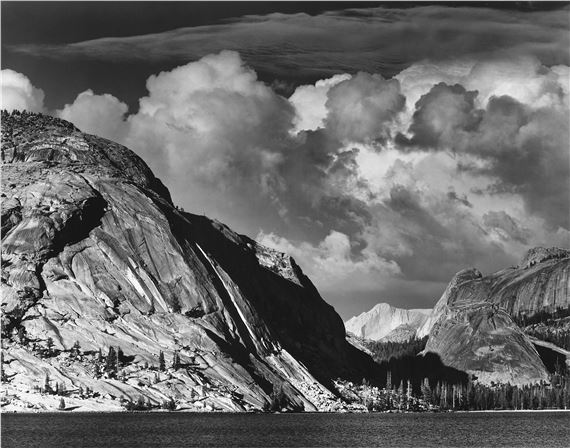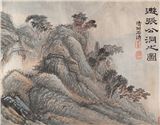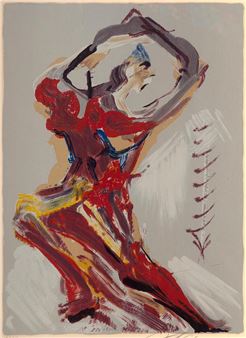Ansel Adams, The Sierra Club, and the Making of a Landscape Icon
Figge Art Museum
Davenport | Iowa | USAThis June, the Figge will present Portfolio Three: Yosemite Valley, a suite of images by the renowned photographer Ansel Adams. A San Francisco native, Adams (1902-1984) was arguably the most famous and influential American landscape photographer of the twentieth century. At the age of twenty-six, Adams served as the Sierra Club’s official trip photographer. Founded by John Muir (1838–1914), the Scottish American naturalist and environmental philosopher, the Sierra Club’s initial mission was the preservation and conservation of California's Sierra Nevada, a mountain range located primarily in eastern central California. In his first role with the Club, Adams accompanied large groups of members on month long excursions in Yosemite—the Club’s home—and in the surrounding Sierra Nevadas. First published in the Sierra Club Bulletin, his impressive images captured and promoted the natural beauty found in Yosemite. Portfolios of Adams’s images were produced in several editions and sold to promote the Club’s conservation efforts.
After the first photographs and paintings of Yosemite were made in the late 1840s, word of the valley’s beauty spread more widely. In 1861 Carleton Watkins (1829-1916), aided by his mammoth-plate view camera, created impressive large format photographs of Yosemite astonishing viewers on the East Coast. It was Watkins’s images that helped to persuade the U.S. Government, to establish, in 1890, Yosemite as the third National Park, after Yellowstone, and Sequoia. Adams added to Watkins’ legacy by making a body of breathtaking images, both intimate and grand, that inspired the preservation of some of the country’s most beautiful and fragile lands. Of course, turning Yosemite into a National Park was not without its costs. In the mid-nineteenth century, state backed militias forcibly removed the Southern Sierra Miwok peoples from the area—including the Ahwahnee for whom the valley floor had been home for a millennium—to exploit Yosemite’s natural resources. And, for the past century, the rapid increase in visitors to over three million annually has taxed the park’s resources, threatening the very beauty they have come to see. In response, the Sierra Club—along with members of the Mono Lake Paiute, and Shoshone communities—is taking the lead by proposing alternatives to the National Park Service’s solution of paving paradise further. In this effort, photographs by Adams, as well as those by several new generations of photographers, serve as reminders of Yosemite’s iconic beauty and the perils it continues to face.

This June, the Figge will present Portfolio Three: Yosemite Valley, a suite of images by the renowned photographer Ansel Adams. A San Francisco native, Adams (1902-1984) was arguably the most famous and influential American landscape photographer of the twentieth century. At the age of twenty-six, Adams served as the Sierra Club’s official trip photographer. Founded by John Muir (1838–1914), the Scottish American naturalist and environmental philosopher, the Sierra Club’s initial mission was the preservation and conservation of California's Sierra Nevada, a mountain range located primarily in eastern central California. In his first role with the Club, Adams accompanied large groups of members on month long excursions in Yosemite—the Club’s home—and in the surrounding Sierra Nevadas. First published in the Sierra Club Bulletin, his impressive images captured and promoted the natural beauty found in Yosemite. Portfolios of Adams’s images were produced in several editions and sold to promote the Club’s conservation efforts.
After the first photographs and paintings of Yosemite were made in the late 1840s, word of the valley’s beauty spread more widely. In 1861 Carleton Watkins (1829-1916), aided by his mammoth-plate view camera, created impressive large format photographs of Yosemite astonishing viewers on the East Coast. It was Watkins’s images that helped to persuade the U.S. Government, to establish, in 1890, Yosemite as the third National Park, after Yellowstone, and Sequoia. Adams added to Watkins’ legacy by making a body of breathtaking images, both intimate and grand, that inspired the preservation of some of the country’s most beautiful and fragile lands. Of course, turning Yosemite into a National Park was not without its costs. In the mid-nineteenth century, state backed militias forcibly removed the Southern Sierra Miwok peoples from the area—including the Ahwahnee for whom the valley floor had been home for a millennium—to exploit Yosemite’s natural resources. And, for the past century, the rapid increase in visitors to over three million annually has taxed the park’s resources, threatening the very beauty they have come to see. In response, the Sierra Club—along with members of the Mono Lake Paiute, and Shoshone communities—is taking the lead by proposing alternatives to the National Park Service’s solution of paving paradise further. In this effort, photographs by Adams, as well as those by several new generations of photographers, serve as reminders of Yosemite’s iconic beauty and the perils it continues to face.
Artists on show
Contact details











